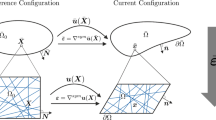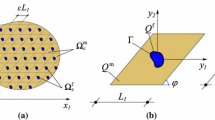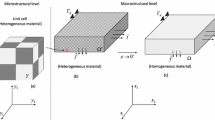Summary
Materials with specific microstructural characteristics and composite structures are able to exhibit negative Poisson's ratio. This fact has been shown to be valid for certain mechanisms, composites with voids and frameworks and has recently been verified for microstructures optimally designed by the homogenization approach. For microstructures composed of beams, it has been postulated that nonconvex shapes (with reentrant corners) are responsible for this effect. In this paper, it is numerically shown that mainly the shape, but also the ratio of shear-to-bending rigidity of the beams do influence the apparent (phenomenological) Poisson's ratio. The same is valid for continua with voids, or for composites with irregular shapes of inclusions, even if the constituents are quite usual materials, provided that their porosity is strongly manifested. Elements of the numerical homogenization theory and first attempts towards an optimal design theory are presented in this paper and applied for a numerical investigation of such types of materials.
Similar content being viewed by others
Author information
Authors and Affiliations
Additional information
Received 11 March 1997; accepted for publication 12 September 1997
Rights and permissions
About this article
Cite this article
Theocaris, P., Stavroulakis, G. The homogenization method for the study of variation of Poisson's ratio in fiber composites. Archive of Applied Mechanics 68, 281–295 (1998). https://doi.org/10.1007/s004190050165
Issue Date:
DOI: https://doi.org/10.1007/s004190050165




